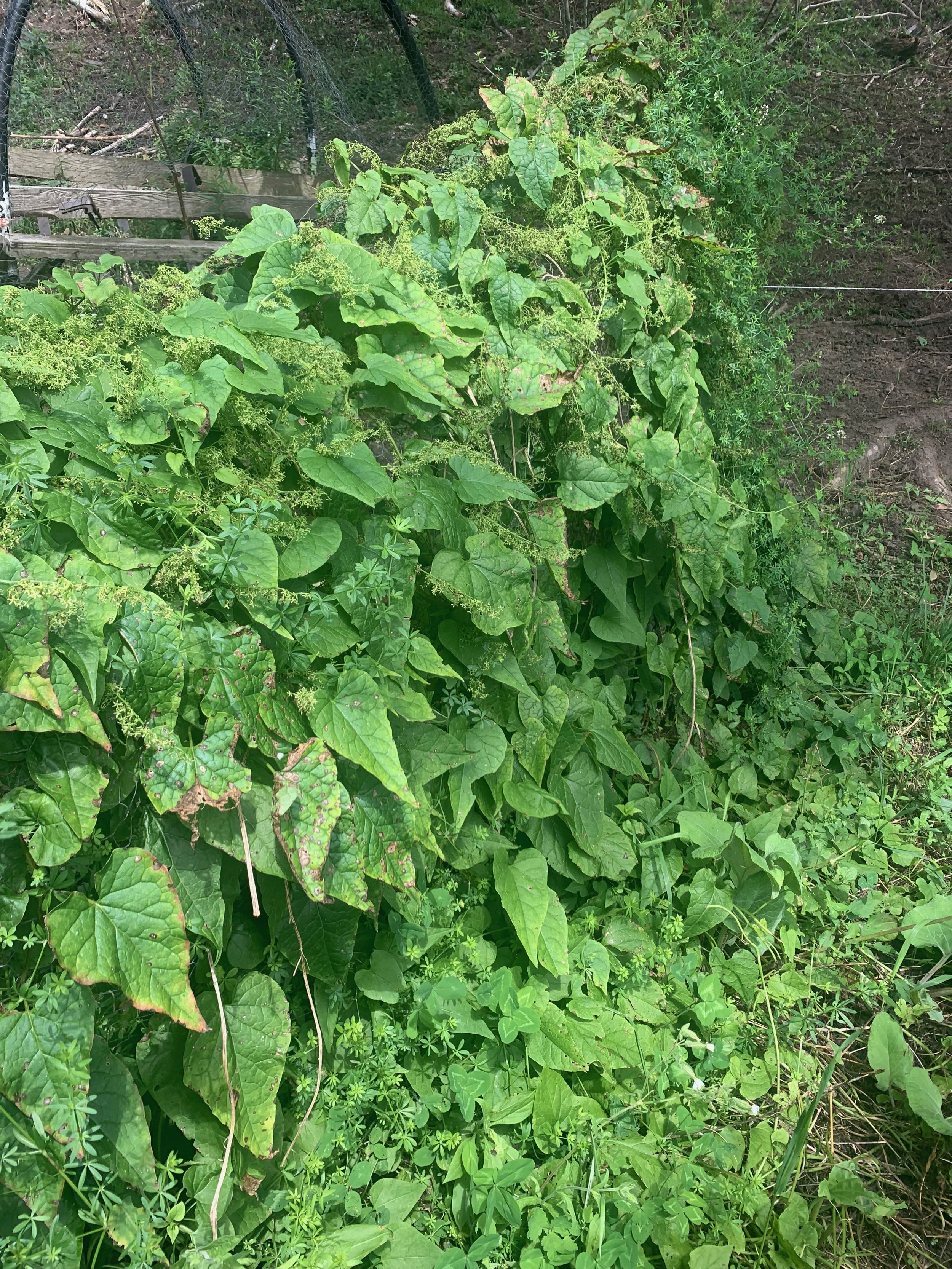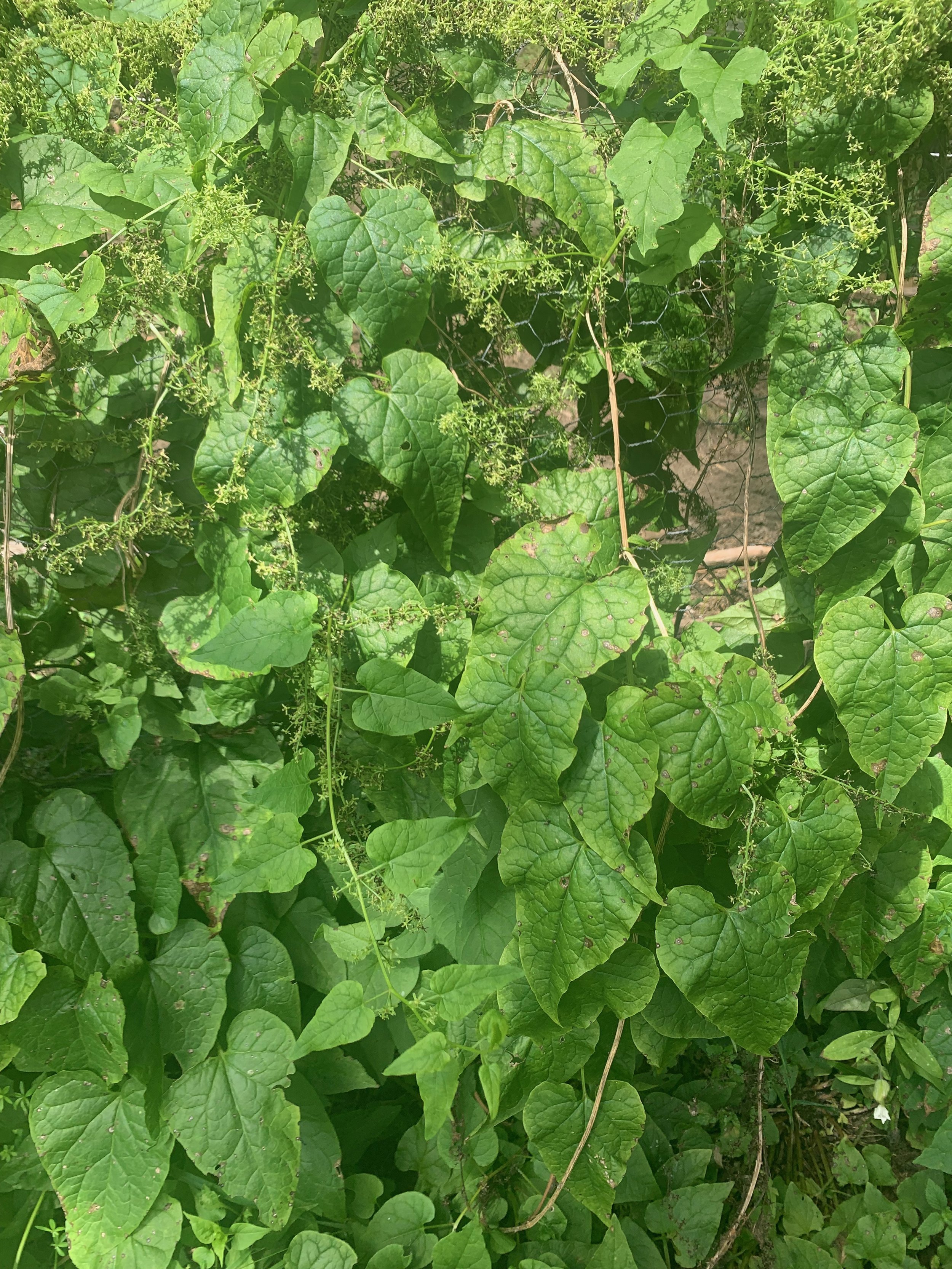Hablitzia Tamnoides (Amaranthaceae)
This is a pretty cool plant! Also called Caucasian Mountain spinach because it originates in the Caucasus regions of Europe where this herbaceous, vining plant grows in the understory of temperate forests. It can grow 6-9 ft. in the early part of the year and produces delicious, edible greens that taste like spinach with no bitterness. The growth comes on early when few other fresh greens are ready. Though it can grow in dappled shade, full sun will maximize its potential . On top of all that, it is a beautiful vine with heart shaped leaves that makes a nice summer screen. It is related to spinach and beets through the subfamily betoideae, interestingly though, it is the sole species of the genus hablitzia. A unique and beautiful addition to the edible landscape.
This is a pretty cool plant! Also called Caucasian Mountain spinach because it originates in the Caucasus regions of Europe where this herbaceous, vining plant grows in the understory of temperate forests. It can grow 6-9 ft. in the early part of the year and produces delicious, edible greens that taste like spinach with no bitterness. The growth comes on early when few other fresh greens are ready. Though it can grow in dappled shade, full sun will maximize its potential . On top of all that, it is a beautiful vine with heart shaped leaves that makes a nice summer screen. It is related to spinach and beets through the subfamily betoideae, interestingly though, it is the sole species of the genus hablitzia. A unique and beautiful addition to the edible landscape.
This is a pretty cool plant! Also called Caucasian Mountain spinach because it originates in the Caucasus regions of Europe where this herbaceous, vining plant grows in the understory of temperate forests. It can grow 6-9 ft. in the early part of the year and produces delicious, edible greens that taste like spinach with no bitterness. The growth comes on early when few other fresh greens are ready. Though it can grow in dappled shade, full sun will maximize its potential . On top of all that, it is a beautiful vine with heart shaped leaves that makes a nice summer screen. It is related to spinach and beets through the subfamily betoideae, interestingly though, it is the sole species of the genus hablitzia. A unique and beautiful addition to the edible landscape.



